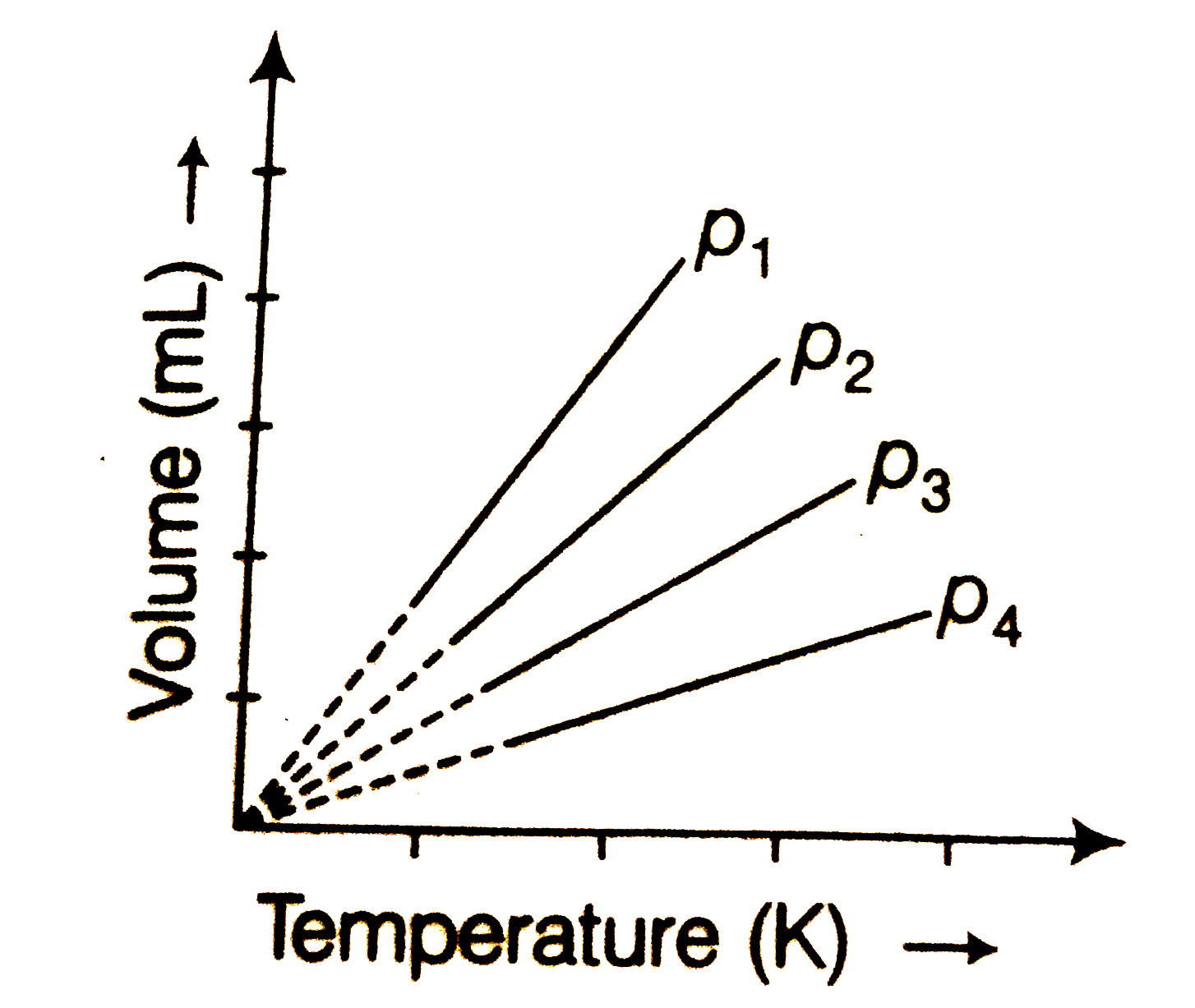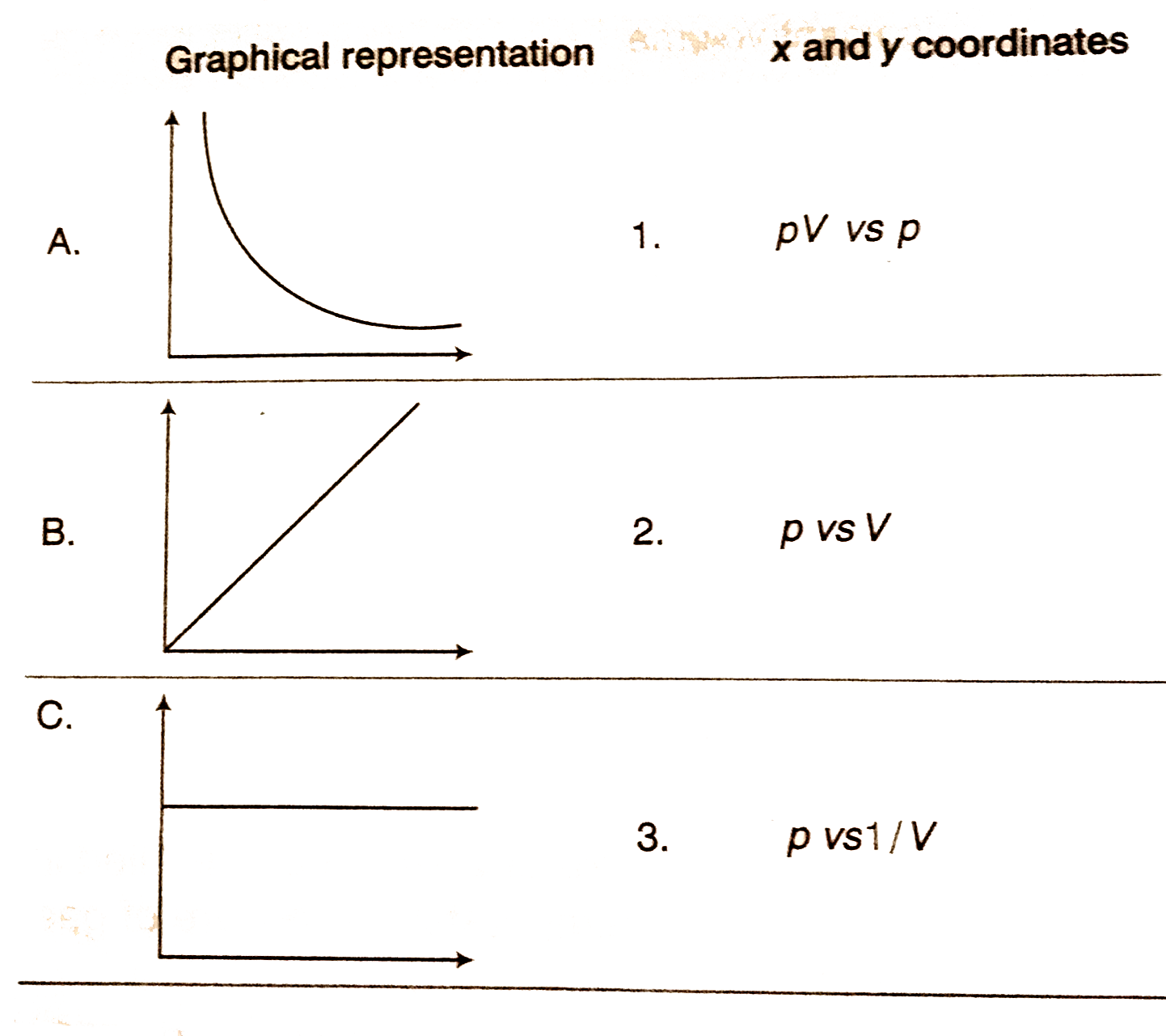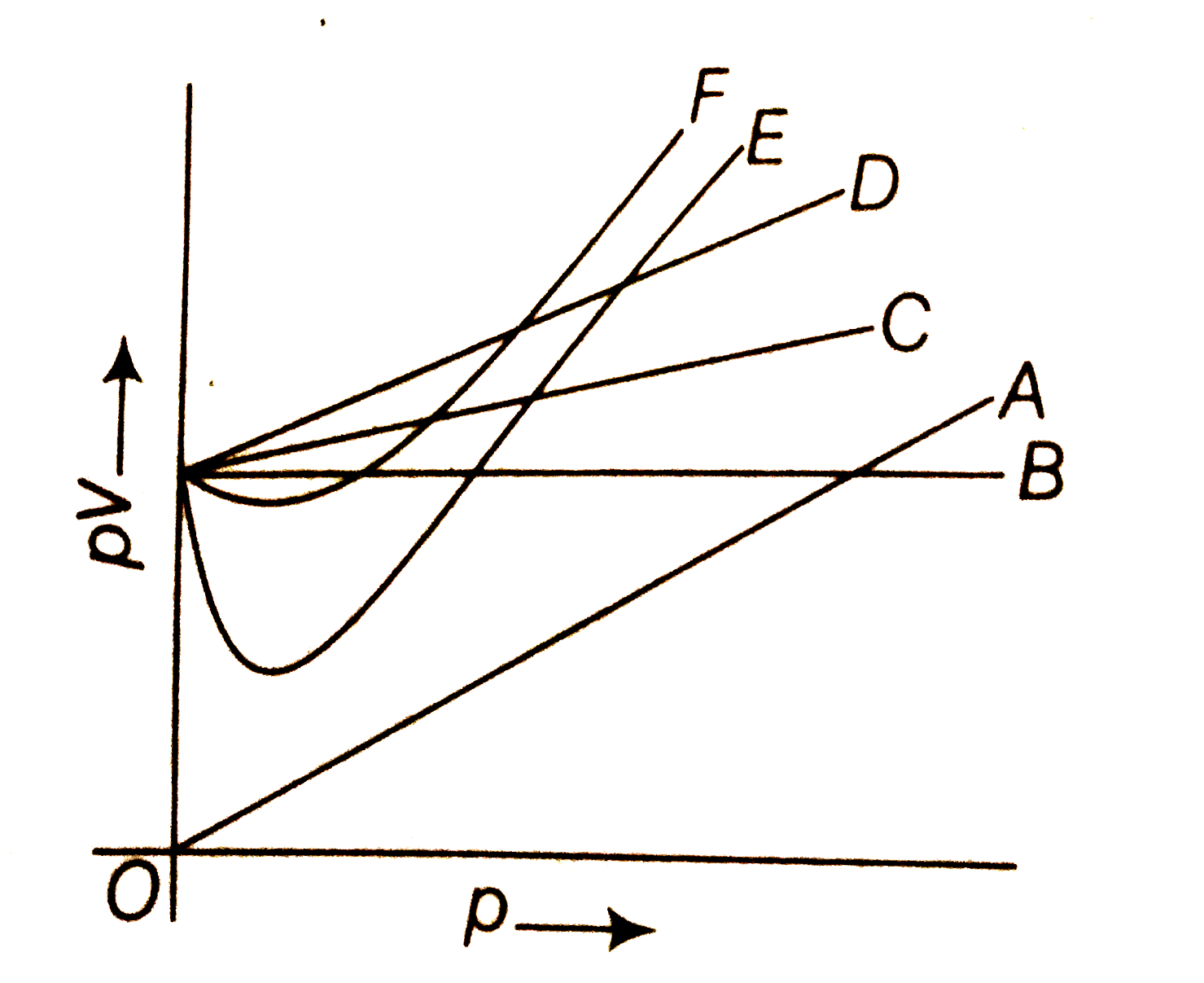Complete Solutions to Practice Exercise (Exercise 1) of chapter STATES OF MATTER of Class 12 book with complete answers and questions
| Class 12 | CHEMISTRY |
| Chapter | STATES OF MATTER |
| MHTCET PREP GUIDE | Practice Exercise (Exercise 1) |
| Number Of Questions | 40 |
| Academic Year | 2023-24 |
A plot of volume (V) versus temperature (T) for a gas at constant pressure is a straight line passing through the origin.

The plots at different values of pressure are shown in figure. Which of the following order of pressure is correct foir this gas?View SolutionIn order to increase the volume of a gas by `10%` , the pressure of the gas should be
01:34View SolutionA bubble of gas released at the bottom of a lake increases to four times its original volume when it reaches the surface. Assuming that atmospheric pressure is equivalent to the pressure exerted by a column of water 10 m high, what is the depth of the lake?
05:13View SolutionWhich is a correct statement of Gay-Lussac's law describing the behaviour of a fixed amount of gas?
01:18View SolutionWhich of the following is the correcrt representation of Gay-Lussac's law?
View SolutionA gas is at a pressure of 2 atm at `0^(@)` is filled in a container . At what temperature, pressure of gas will be 4 atm?
01:28View SolutionA gas at 300 k is compressed to reduce its volume to half of its volume. At what temperature, will it become half of its initial volume?
01:12View SolutionBy Avogadro's law, V=kn
If volume occupied by 1 mole of a gas at STP is 22.4 L, then what will be the value of k if we take 0.5 mole of gas under same condition of temperature and pressure01:24View SolutionGas equation `PV = nRT` is obeyed by
01:13View SolutionA sample of unknown gas is placed in a 2.5 L bulb at a pressure of 360 Torr and at a temperature of `22.5^(@)`C and Is found to weight 1.6616 g. What is the molecular weight of the gas?
01:53View SolutionUnder isobaric condition, volume becomes 1.5 times when temperature changes from
02:48View SolutionA 1 L flask contains 32 g `O_(2)` gas at `27^(@)C`. What mass of `O_(2)` must be released to reduce the pressure in the flask to 12.315 atm?
02:24View SolutionMatch the following graphs of ideal gas with their coordinates.Choose the correct option from the codes given below.
 View Solution
View SolutionA quantity of gas is collected in a graduated tube over the mercury. The volume of gas at `18^(@)C` is 50 mL and the level of mercuty in the tube is 100mm above the outside mercuty level. The barometer reads 750 torr. Hence, volume of gas 1 atm and `0^(@)C` is approximately:
02:19View SolutionThe kinetic molecular theory of gases predicts pressure to rise as the temperature of a gas increases. It is because
02:15View SolutionAs the temperature increases, average kinetic energy of molecules increases. What would be the effect of increase of temperature on pressure provided the volume is constant ?
01:50View SolutionThe ratio of root mean square velocity of average velocity of a gas molecule at a particular temperture is
02:15View SolutionA mixture of hydrogen and helium is prepared in such a way that the number of collisions on the wall per unit time by molecules of each gas is same. The gas which has higher concentration is
02:43View SolutionThe rms velocity of hydrogen is `sqrt(7)` times the rms velocity of nitrogen. If `T` is the temperature of the gas, then
03:04View SolutionThe ratio between the root mean square speed of `H_(2)` at `50 K` and that of `O_(2)` at `800 K` is
03:11View SolutionFor a monatomic gas, kinetic energy `= E`. The relation with `rms` velocity is
02:09View SolutionWhich curve in figure represents the curve of ideal gas?
 View Solution
View SolutionThe wrong statement among the following is
04:50View SolutionCompressibility factor for `CO_(2)` at 400 k and 71.0 bar is 0.8697. Molar volume of `CO_(2)` under these
02:14View SolutionAt a high pressure, van der Waals' equation reduces to
02:45View SolutionIn van der Waals' equation of state of the gas law the constnat 'b' is a measure of .
02:36View SolutionThe value of van der Waals constant `a` for the gases `O_(2)`, `N_(2)`, `NH_(3)`, and `CH_(4)` are `1.360`, `1.390`, `4.170`, and `2.253 L^(2) atm mol^(-2)`, respectively. The gas which can most easily be liquefied is
02:33View SolutionA gas obeys the equation of state `P(V-b) =RT` The parameter b is a constnat The slope for an isochore will be .
01:51View SolutionThe term that corrects for the attractive forces present in a real gas in the van der Waal's equation is
02:13View SolutionCompressibility factor for `H_(2)` behaving as real gas is:
02:02View SolutionA person living in shimla observd that cooking without using pressure cooker takes more time. The reason for this observation is that at high altitude
02:36View SolutionA liquid boils, when
01:33View SolutionWhich of the following liquid will exhibit highest vapour pressure?
03:21View SolutionWhat is `SI` unit of viscosity coefficient `(eta)` ?
02:46View SolutionIncrease in kinetic energy can overcome intermolecular forces of attraction. How will the viscosity of liquid be affected by the increase in temperature ?
02:33View SolutionWhich of the following is correct regarding viscosity?
02:12View SolutionWhich of the following is correct statement?
02:20View SolutionThe surface tension of which of the following liquid is maximum?
02:42View SolutionThe surface tension of a liquid is affected by
02:02View SolutionWhich of the following property of water can be used to explain the spherical shape of rain droplets ?
02:17View Solution
Practice Exercise (Exercise 1) questions and complete solutions for chapter STATES OF MATTER of MHTCET PREVIOUS YEAR PAPERS AND PRACTICE PAPERS of Class 12
